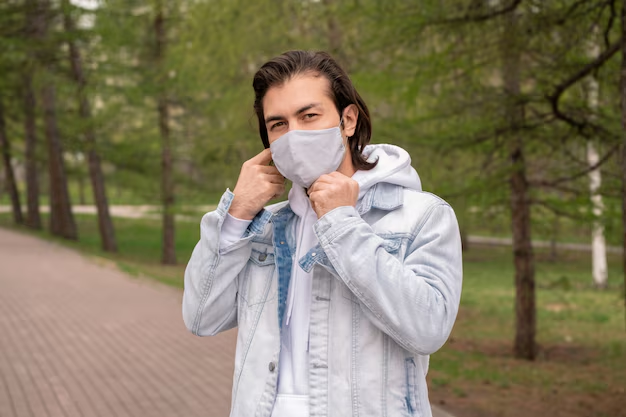Understanding Walking Pneumonia: What It Is and Why It Matters
When we think about pneumonia, we often imagine a severe illness that requires hospitalization and intense medical care. However, there's a less aggressive form known as walking pneumonia that, while milder, can still have a significant impact on your daily life. But what exactly is walking pneumonia, how does it differ from traditional pneumonia, and what should you be aware of? Let's delve deeper.
What is Walking Pneumonia?
Walking pneumonia, medically termed as atypical pneumonia, refers to pneumonia that is mild enough not to require bed rest or hospitalization. It's often a result of a bacterial infection, typically caused by Mycoplasma pneumoniae. Unlike its more severe counterpart, this type of pneumonia allows individuals to continue with their daily activities, hence the term "walking."
Symptoms of Walking Pneumonia
Understanding the symptoms is key to recognizing walking pneumonia. Common signs include:
- Persistent Cough: Often dry and nagging.
- Mild Fever: Typically lower than other forms of pneumonia.
- Fatigue: A constant feeling of tiredness.
- Sore Throat: Commonly mistaken for just a sore throat at first.
- Headache: Often dull and persistent.
- Muscle Pain: Mild aches in various muscles.
- Chest Pain: Discomfort or pain during deep breaths.
These symptoms might appear gradually and can persist for weeks or even a month, often resembling a cold or flu, which makes diagnosis challenging.
Causes and Risk Factors
The Culprit: Mycoplasma pneumoniae
The primary cause is the bacterium Mycoplasma pneumoniae. This bacterium lacks a cell wall, making it resistant to some common antibiotics, such as penicillin, which target cell walls. This is why specific antibiotics like macrolides are typically used.
Risk Factors
- Age: Common in children and young adults, particularly those in crowded places like schools.
- Immune System: Individuals with weakened immune systems are more susceptible.
- Environment: Living in crowded or enclosed spaces increases the risk of transmission.
Diagnosis: Identifying Walking Pneumonia
Diagnosing walking pneumonia can be tricky due to its mild nature. Often, it is diagnosed through:
- Physical Examination: Doctors listen for abnormal lung sounds.
- Chest X-ray: Helps to detect lung inflammation.
- Blood Tests: These may be used to check for Mycoplasma pneumoniae.
Treatment and Management
Although walking pneumonia is less severe, effective management is crucial to avoid complications.
Medical Treatment
- Antibiotics: Medicines like macrolides, tetracyclines, or fluoroquinolones are often prescribed.
- Rest and Hydration: Ensuring adequate rest and fluid intake helps recovery.
- Over-the-Counter Medications: These can alleviate symptoms like cough and headache.
Home Remedies
- Humidifiers: Keeping the air moist can ease breathing.
- Warm Fluids: Drinking warm fluids can help soothe the throat.
- Proper Nutrition: A balanced diet supports the immune system.
Complications and When to Seek Help
While generally not as severe as typical pneumonia, complications can arise, especially if untreated.
Potential Complications
- Severe Pneumonia: Walking pneumonia can progress if not properly managed.
- Asthma Exacerbation: For those with asthma, symptoms might worsen.
- Respiratory Failure: In rare, severe cases.
Seek medical attention if symptoms worsen, breathe difficulties increase, or you experience chest pain or confusion.
Walking Pneumonia vs. Other Respiratory Infections
How It Differs
- Severity: Walking pneumonia is less severe than traditional pneumonia.
- Treatment: Different bacteria require different antibiotics.
- Contagion: Spread similarly to colds and flu via respiratory droplets.
Understanding these differences can guide preventive measures and encourage timely diagnosis and treatment.
Preventive Strategies
While not entirely preventable, certain practices can reduce the risk of contracting walking pneumonia.
Best Practices
- Hand Hygiene: Regular hand washing reduces bacteria spread.
- Avoiding Close Contact: Especially with those showing symptoms.
- Hygiene Etiquette: Covering mouth and nose when sneezing or coughing.
Promoting these habits, particularly in schools and densely populated areas, can help prevent the spread of walking pneumonia.
Moving Forward: Living with Walking Pneumonia
Understanding the nature of walking pneumonia enables individuals to manage their health better. Being aware of the symptoms and risk factors allows one to take proactive measures, consult medical professionals timely, and mitigate complications. Remember, while walking pneumonia might allow you to continue daily activities, it deserves attention and care like any other illness.
Summary: Key Takeaways on Walking Pneumonia
- 🌬️ Definition: A mild form of pneumonia allowing individuals to "walk" and go about daily activities.
- 🛌 Symptoms: Persistent cough, mild fever, fatigue, sore throat, and headache.
- 🔍 Diagnosis: Physical exams and chest X-rays are common diagnostic tools.
- 💊 Treatment: Antibiotics tailored to the bacteria, rest, and hydration.
- ⚠️ Complications: Potential for exacerbation if untreated; seek help if symptoms escalate.
- 🖐️ Prevention: Hand hygiene and avoiding close contact can reduce risk.
Developing a keen awareness of these elements ensures you are prepared and knowledgeable about walking pneumonia, optimizing both prevention and recovery. 🌟

Related Articles
- a Typical Pneumonia
- Can a Cold Turn Into Pneumonia
- Can a Sinus Infection Turn Into Pneumonia
- Can Amoxicillin Cure Pneumonia
- Can Amoxicillin Treat Pneumonia
- Can Baby Oil Cause Pneumonia
- Can Bronchitis Turn Into Pneumonia
- Can Covid Turn Into Pneumonia
- Can Doxycycline Treat Pneumonia
- Can Flu Turn Into Pneumonia